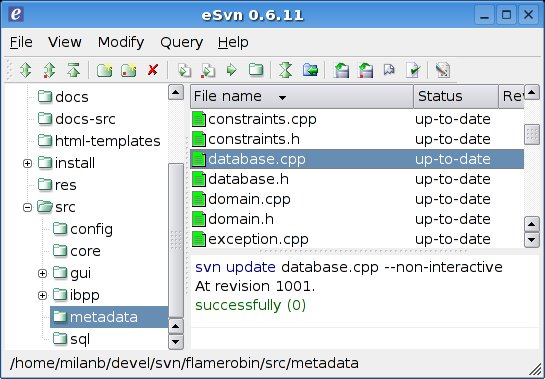Subversion GUI for Linux

Some time ago, all the projects I’m involved in, switched from CVS to Subversion. After I’ve seen how good it is, I switched all my projects as well (even the commercial stuff I’m working on). As I use Linux as my main OS, I started the quest to find a suitable graphical SVN client for Linux. I tried these:
1. KdeSVN
2. eSVN
3. RapidSVN
They all have a single problem in common. When you add a lot of files in your working copy, you should be able to painlessly add them to repository. TortoiseSVN (Subversion client from MS Windows) does it the proper way:
a) run “svn status”, and take all the files returned by it
b) show that list with checkboxes so user can pick which of those unversioned files (s)he wants to add
c) add them
Nice, simple and user-friendly. Unfortunately, none of those Linux programs have it. They all require that you pin-point each file. Sometimes I even add a file somewhere deep in directory structure, and forget about. I only catch the problem when I (or someone else) figure it is missing when working on another computer.
I tried to circumvent the problem by running the “status” command, but eSVN for example lists all files, since it envokes “svn status” with verbose flag. Who ever uses that feature I wonder?
Anyway, from all those, I prefer eSVN for its user interface. It is clean - so it’s easy to spot the changes, and it doesn’t flicker like RapidSVN. KDEsvn seems quite good, but it has a lot of background “syncing” with the repository (I think I’ve seen the option to turn it off, but didn’t bother). Why do tool makers add some extra-cool-whatever-used-by-nobody features instead of adding the esential ones? It really escapes me.
Given all this, I’m still using command-line svn from terminal most of the time. Sometimes I run svn status in terminal, and then hunt for files in GUI.
To all those “Linux desktop” proponents: If you want to see quality Linux desktop - make some pressure on developers of these tools (I’m trying by posting this on my blog).
All they need to implement is 4 basic svn commands:
svn update
svn commit
svn add
svn status
And they need to do it properly. We can do checkout manually, we can do merging and other once-a-year stuff manually. But this day-to-day features must work. All the tools I tried only implemented update and commit as they should, “add” and “status” need to be connected.
